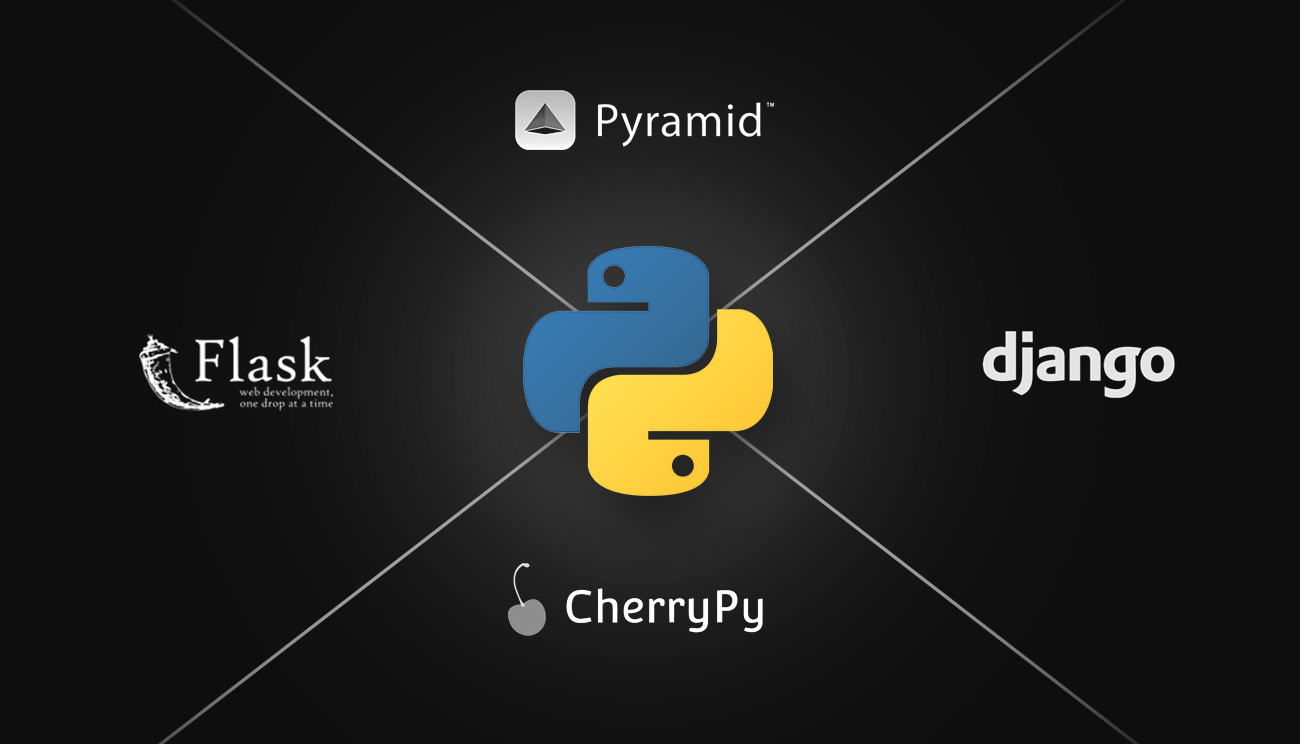Python is the fastest growing programming language. There are good reasons for this growth, including high salaries (an average per annum salary of $114,490 per annum, according to Indeed), excellent job demand and the sheer number of exciting innovations that rely on Python such as machine learning, artificial intelligence (AI), big data, robotics and cyber security. “If you decide you want to build a web application, and you would like to develop it in Python, you’ll probably want (to use a) web framework,” explains Gareth Dwyer, software and operations developer at HyperionDev. So which Python web framework should you choose?
Frameworks: What Do They Do?
Frameworks are there to make your life easier. According to Coding Dojo, a framework is a collection, or library, of packages or modules that helps you build web applications that are scalable, reliable and maintainable. Frameworks make it possible for you to reuse code for common procedures or operations. They are really a repository of work compiled by previous programmers. Frameworks let you skip over the low-level details including protocols, sockets or process/thread management.
If you’re a developer, you’re generally going to write code that allows you to ‘plug in’ to the framework, explains the Python website. You’ll cut development time by automating the implementation of common solutions, so that you can focus on the logic of your application. And the good news with Python is that you’re spoilt for choice when it comes to frameworks including Django, Flask, Pyramid, Tornado, Bottle, Diesel, Pecan and Falcon. This piece will focus on Django and Flask, which are likely the two most popular Python web frameworks.
Some Things To Consider When Deciding On A Framework
When deciding on which Python web framework to choose, here are some factors worth considering:
- How big and complex is your project? A full-stack framework – e.g. Django – might be a better option if you’re wanting to develop a large system with features and requirements, but these frameworks come with limitations. A microframework might be better for a smaller project.
- How much external support are you going to need? Django, for example, has 80 000 Stack Overflow questions (and even more answers) as well as a large number of blogs from developers and users, whereas other communities aren’t as big.
Some Common Python Web Frameworks
1. Django
- Probably the most popular Python framework, and for good reason – it’s free, open-source and full-stack.
- Contains everything you need to build low- or high-end web applications.
- Features include authentication, URL routing, template engine, object-relational mapper (ORM) and database schema migrations.
- Strong community support and detailed documentation to describe the framework’s functionality.
- It’s a complete solution but it’s also somewhat inflexible. It’s suitable for standard applications – i.e. most software projects – but not for unconventional designs.
2. Flask
- Flask is a microframework, which provides a greater level of simplicity, flexibility and fine-grained control than Django.
- It has a lightweight and modular design, making it adaptable to a range of developers’ need.
- Includes a number of out-of-the-box features – e.g. built-in development server, fast debugger, integrated support for unit testing, RESTful request dispatching, Jinja2 templating, secure cookies support (client-side sessions), WSGI 1.0 compliance, Unicode-based, can plug in any ORM, HTTP request handling.
- In essence: a ‘bare-minimum’ that leaves the add-ons, or the bells and whistles, to the developer.
- For a step-by-step tutorial on how to deploy a machine learning model using Flask, read more here.
- Features include authentication, URL routing, template engine, object-relational mapper (ORM) and database schema migrations.
- Strong community support and detailed documentation to describe the framework’s functionality.
- It’s a complete solution but it’s also somewhat inflexible. It’s suitable for standard applications – i.e. most software projects – but not for unconventional designs.
Gareth Dwyer, who is also the author of Flask By Example, summarises it as follows:
‘You should probably choose:
- Django, if you’re focused on the final product. Especially if you’re working on a straightforward application such as a news site, an e-store, or blog, and you want there to always be a single, obvious way of doing things.’
- Flask, if you’re focused on the experience and learning opportunities, or if you want more control about which components to use (such as what databases you want to use and how you want to interact with them).’
In conclusion, it’s clear that a Python framework can be invaluable when it comes to developing web applications. Whether you choose Django or Flask depends on the complexity of your project and the degree of flexibility you require. If you want to learn Python and Django, consider enrolling for HyperionDev’s Full Stack Web Developer Bootcamp. Become a job-ready Full Stack Web Developer over six months and online with this mentor-led program.


